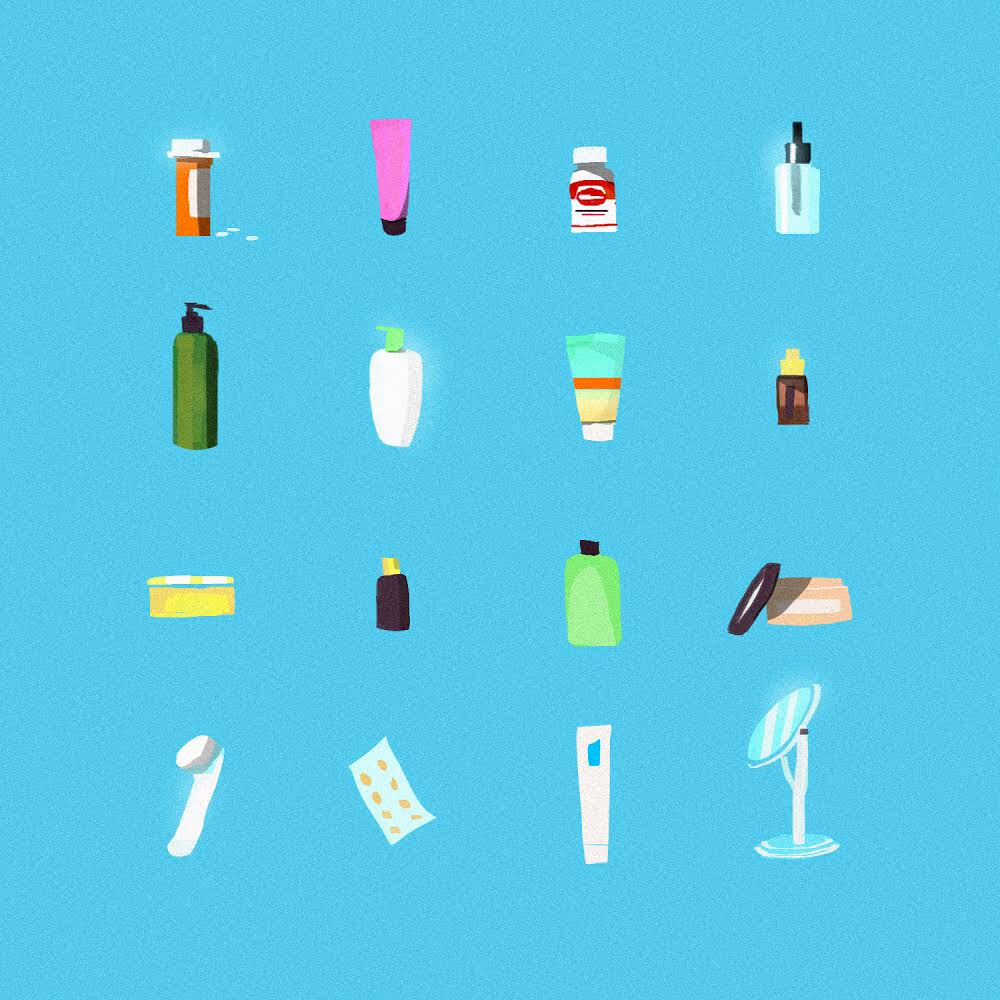Adult acne is common, and it should be accepted

Redness, breaking the skin — not just a zit or two but vast, uneven patches changing day by day. Creams, pills, cosmetics and injections — the first thing most students think when they see acne appear is “How do I stop it?”
While discouraging, adult acne is a very common struggle for college students. At USC, a wide array of resources to fight the dreaded affliction still might not be enough to keep clogged pores at bay. It is important to realize that while acne issues span topics of class and body acceptance, uneven skin is a problem that many students face well into adulthood, and individuals suffering from acne are never alone.
During a typical semester, the Student Health Center has three dermatologists on staff and several physician’s assistants who can help with skin issues with easy weekday appointments, and the USC Health Science Campus has more professionals available to treat acne-related issues. Students can also request digital appointments with providers, a new service that was introduced in the spring this year to speed up the treatment process at USC and has been bolstered due to the coronavirus pandemic.
Acne treatments include over-the-counter creams and washes with benzoyl peroxide, salicylic acid and hard-to-find adapalene, a relatively gentle retinoid currently offered by only one brand in the Target skin care aisle. Patients can also request antibacterial wipes, low-dose antibiotics or harsher treatments such as Accutane injections, which require careful observation and may come with severe side effects.
But not all treatments are available for students with different insurance plans, and battling tough acne can get expensive if skincare aisle washes fail to get the job done. Many insurance plans, including the USC student health care plan, do not cover behind-the-counter adapalene without additional paperwork from a physician.
Another option is to visit an esthetician for acne issues, but this may mean a monthly skincare regimen costing hundreds of dollars a month in addition to chemical peels costing between $100 to $5,000 per visit. No one should feel that they have to put up with acne because they cannot purchase the materials they need to feel their best.
However, does one really have to get rid of acne to feel their best? Having acne as an adult takes a lot of tough love and patience in a world that lauds clear skin, but with education and a proper attitude, both those with and without sensitive skin can learn to love and treat their skin well while dealing with this condition.
A little acne education goes a long way. Some people are surprised to learn that acne is not contagious, and others fail to realize that some of the most intensive medications like Accutane can cause disastrous birth defects and liver damage if left unmonitored. The decision to treat, cover or flaunt acne includes many complex choices that should not be taken lightly.
Students should feel comfortable bringing their best skin forward in a way that best suits them, regardless of class or gender. For some, this means tackling the day bare-faced, while for others, this means turning to makeup or medicine in their daily routine. Even stellar dudes who want acne relief should also be able to utilize the full arsenal of tools at their disposal, including those located in the makeup department.
Students ought to know that they can present themselves any way they choose, even in the face of modern Photoshop and unrealistic beauty standards. Using acne patches, sporting fresh skin or using one’s face as a cosmetic canvas are all valid means of self-expression. Students should support these decisions by engaging in open communication about acne struggles and celebration based on their personalities, not their packaging.
How students deal with their acne is their own decision. Much like appreciating one’s eye color, students are free to accept and enjoy their acne as a feature that gives them character.

